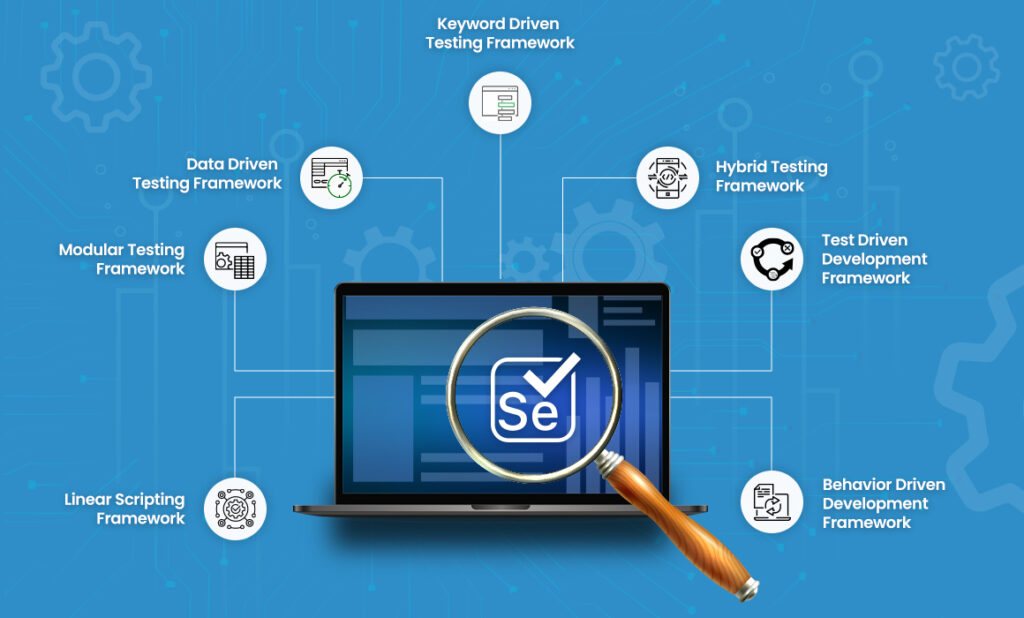Alongside popular business trends, quality assurance’s position in software development keeps evolving. The field of quality assurance (QA) has undergone a significant transformation, surpassing the mere execution of manual testing. Also, coordinating strategic functions plays a role. Chief information officers (CIOs) will continue to prioritise QA testing because software testing is crucial to the success of projects and products. We’ll be looking at some important components of software testing in this article. To learn more, check out the QA training online.
What’s new in software testing
- Digital Transformation
As digital transformation programs, such as DevOps, have become more widely used, companies have been forced to reevaluate quality assurance from a digitalization standpoint. Teams are consequently growing more cohesive since cohesion maximises efficiency and allows for speed. Nonetheless, it’s difficult to envision continuous development and delivery without a strong QA plan. Thus, QA and DevOps are combining to form a new framework known as QAOps. By treating software with a DevOps attitude, QAOps maintains its quality.
- Artificial Intelligence
The subject of AI is still evolving, and this is particularly true for quality assurance. Although a lot of industry experts talk about how AI will transform testing, very few actually seem to be putting it into practice. AI’s primary goal is to improve outcomes through automation, namely machine learning. AI integration will also result in new employment opportunities for particular specialists, such as data scientists and AI quality specialists.
In the coming years, there will be a great need for testers who can become proficient in both using AI-supported testing approaches and testing AI-based systems. The job of the QA engineer in a software development team will shift as artificial intelligence develops. As testers take on increasing responsibilities within their companies, the sector will have to be creative in its augmentation of AI, without allowing AI to impede creativity.
Recent developments in the industry have opened up new possibilities for the use of AI in testing. Predictive models are employed to aid in decision-making, AI-led analytics support teams identify errors to enhance comprehension of high-risk areas and test coverage, and AI algorithms are created to produce better test data, reports, and test cases.
- Testing Center of Excellence (TCoE)
A TCoE is being pushed for by the business community in response to issues including declining finances and a variety of testing delivery methods. The necessity for a TCoE is further reinforced by other problems, such as underperforming tests and underutilised resources as a result of inconsistent test methodologies across teams, locations, and geographies. To increase customer satisfaction, a TCoE makes possible a centralised QA function, consistent processes, comprehensive metrics spanning projects, and consistent delivery. Gaining support from sponsors, evangelising with project teams, and putting in place clear procedures, templates, status reports, metrics reporting, and end-to-end communication channels are all necessary to create a successful TCoE.
Developing a comprehensive project plan with clearly defined procedures, methodologies, tools, communication, and responsibility assignment matrix (RACI matrix) is necessary for a successful TCoE. It guarantees that each team member understands their roles and the objectives of the project. Any new team member should be required to meet the entry criteria of the target operating model, which will also help the team work toward a single goal.
- Mobile testing
Different operating systems must be set up in mobile testing labs. Consequently, it’s still difficult to manage several devices and operating systems. Given the variety of mobile devices on the market today, proficiency in mobile testing is crucial to the QA function’s overall performance. Furthermore, for all clients, mobile testing is becoming a more important field. Establishing a mobile testing lab to assume device management thereby gives organisations a competitive advantage in the current market. Appium, Espresso, XCTest, and Calabash are a few of the tools that are appropriate for mobile testing. Native applications, online applications, and hybrid applications are the three main categories of mobile applications. Due to its ability to cover more platforms, hybrid apps are becoming increasingly popular among enterprises.
- Exploratory testing
To put it simply, exploratory testing provides a solution to the problem of creating high-quality solutions without the need for automation. One of the most important components of exploratory testing is chartering, which is basically defining a precise goal for the testing session. Being an investigator means that the tester’s duties include defining the mission’s scope and posing queries on the user story. Turning off social media, email, and other distractions will allow the tester to concentrate just on the session. The testers ought to pause for five minutes to think after the session. It has been discovered that conducting session-based testing in pairs is more productive. The main benefit of exploratory testing is that it lets users use their imagination to discover new faults that scriptless testing was unable to detect.
- Automation testing
Open-source software has replaced licensed software in recent years. Businesses that know how to use open-source tools well can prosper in the growing market. However, organisations need to demonstrate that the chosen technology functions well in a client environment before launching any automation initiatives. By doing this, they will gain the confidence of clients about the suggested solution, accelerate the rate of execution, lower costs, facilitate quicker iterations of the regression process, and eventually generate a superior result. Some of the most widely used tools available for functional testing are Selenium, Playwright, Cypress, and Cucumber. Playwrights are becoming increasingly popular in the business.
- Continuous integration testing
The purpose of this frequent code integration and small increment testing in a production-like environment is to help detect problems early on and enable high-quality, defect-free releases. Better project outcomes, lower risks, and timely, functional software availability are further benefits of continuous integration testing. Increased releases in shorter amounts of time and a controlled continuous integration and continuous delivery/continuous deployment (CI/CD) pipeline are other outcomes of continuous integration testing. This is also the foundation for DevOps, which leads to more releases in a shorter amount of time, a regulated CI/CD pipeline, and the capacity to perform fixes right away. User and beta testing can also be conducted with ease thanks to continuous integration testing.
- Security testing
Given the continued prevalence of remote and hybrid work, security testing has emerged as a top priority for all companies. Furthermore, security concerns have grown since cloud-based testing was introduced. Since security testing is a specialist talent, building a well-rounded testing firm requires having experts as partners and workers. Confidentiality, integrity, authentication, availability, authorization, and non-repudiation are examples of common security needs. Security testing is specialist expertise, so as time goes on, demand for it will increase. It will also become increasingly important in our discussions with customers about the quality of our processes and products.
- Separation of QA and development
From the standpoint of compliance, establishing an impartial definition of quality is essential. To guarantee that quality is ingrained and that there is no bias in the outcomes, it is a good idea to keep the development and QA teams apart. Nevertheless, there’s a new trend on the rise: DevOps-based integration of QA and development teams. We may eventually arrive at a point where both roles are combined into one.
- Early defect detection
More money is now being allocated by IT companies to quality assurance (QA) than in the past. Businesses must include the QA team early in the software development life cycle to guarantee that the budget increase is feasible. Businesses save money on general quality-related expenses as well as costs associated with repairing problems when they are found early. The secret to moving left is assessing a change’s efficacy and whether it lives up to end users’ expectations. Having QA create unit test cases that development teams can employ for test-driven development (TDD) testing is another helpful technique.
- Software Development Engineers in Test (SDETs)
Functional and automation testing combined into one, SDETs are testers with the ability to code who support enterprises in achieving future successes. Additionally, SDETs enhance white box testing, which is not typically carried out by QA teams, and assist QA teams in finding issues earlier. Through automation solutions, SDETs enable cost reductions while simultaneously improving quality.
- Test environments
QA teams must acquire the abilities necessary to handle domains on their own. Because QA teams test separately from development teams, the test environments must therefore assist QA teams. Since a testing project will not proceed if the testing environment is unavailable or incompatible, organisations are using additional test environment solutions. For every deployment, it is crucial to make sure the proper environment is available and to write acceptable release notes. These steps will assist in setting expectations and effectively communicating the changes. The success of a testing team also depends on the findings of unit tests and the defect report.
Conclusion
The fact that more and more CIOs believe QA is here to stay is encouraging. Therefore, spending money on quality assurance (QA) is still essential to raising sales and client happiness. The primary focus areas for QA firms in 2024 should be the aforementioned trends. Check out the QA testing training to learn more.





























